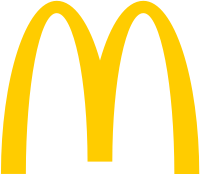KFC, McDonald’s Consumed By New Safety Scandal

It’s been more than a year since a major food safety scare hit western fast-food operators in China, so we were probably overdue for the latest scandal that is now consuming leading chains KFC (NYSE: YUM) and McDonald’s (NYSE: MCD). Frankly speaking, Chinese consumers are probably so jaded about food safety scandals by now that I don’t know if these latest 2 will really have much long-term impact on either company.
The most disgraceful element this time is the fact that the supplier at the heart of the latest scandal is a foreign-owned firm. Up until now, most of the suppliers who provided tainted food to big foreign supermarkets and restaurant chains were domestic Chinese firms, which usually have lower quality control standards. Thus this latest scandal could really do some damage to the broader image of foreign-owned companies, which are generally seen as more trustworthy than their Chinese peers.
Like many other food safety scandals, this latest one stems from a series of investigative TV reports that uncovered a range of unsavory practices at Shanghai Husi Food Co, a unit of US-based OSI Group. (English article) The report came from the local TV operator here in Shanghai, and said the affected products were mostly sold at restaurants in China’s commercial capital.
Among other things, undercover reporters secretly taped Husi workers picking up meat that had dropped on the floor and putting it back into processing machinery. They also discovered workers took meat that was past its expiration date, and then mixed it with fresh meat to avoid throwing it away. Both KFC parent Yum Brands and McDonald’s have apologized for purchasing meat from Husi, and have said the company is no longer one of their suppliers.
For its part, OSI said it was “appalled” by the report and has formed its own team to investigate the matter, adding that it believes the incident was isolated. Perhaps the company is being sincere, though OSI is really quite naive if it doesn’t realize that China-based manufacturing facilities often require far more strict supervision than plants in developed countries like the US.
Chinese workers are often loathe to throw away food products that are past their expiry, often seeing such practice as costly and wasteful. Thus this kind of scandal involving sale of expired goods is hardly unique to Hosi, which should have been aware of that fact and created better processes to ensure that expired food was properly destroyed and not simply reused.
I wrote just last week about KFC, after the company posted strong second quarter sales following a sharp downturn in 2013. (previous post) That earlier downturn owed to 2 major one-time factors, namely a bird flu outbreak and also another food safety scandal involving chickens containing excessive levels of antibiotics. A larger, more systemic factor confronting both KFC and McDonald’s is their fading appeal to Chinese consumers due to the rise of many alternatives over the last decade.
This latest scandal underscores the fact that KFC and McDonald’s remain attractive targets for this kind of attack by Chinese media due to their famous brands and also because they are foreign. Such names automatically have a higher level of trust among Chinese consumers, who often suspect local brands of using lower standards for food safety and quality in general.
Stock of both Yum and McDonald’s took a hit after the news came out, falling 4.2 percent and 1.5 percent, respectively. If I were a financial adviser, I might say the sell-off looks like a potential buying opportunity for both stocks, especially Yum. But that said, neither of these companies will bounce back quickly in China, since even after the latest scandal subsides both will face the far larger issues of aging brands and stiff competition in the massive market.
Bottom line: The latest food safety scandal to hit KFC and McDonald’s in China will have limited impact, though both companies will continue to face the longer term challenge of stagnating growth.
Related posts:
